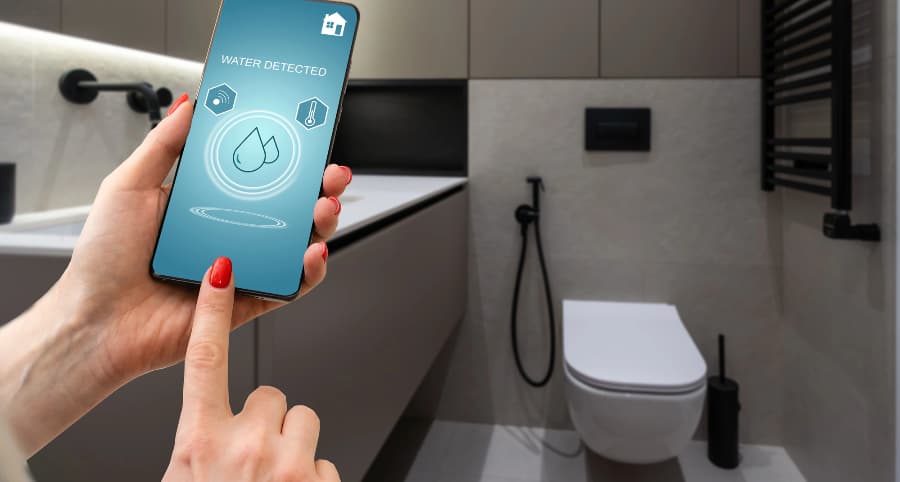How does a water sensor work and why install one with your Joplin smart home?

One small leak at your property can cause big difficulties and thousands of dollars in damage. You have to defend against this threat; fortunately, there’s a simple way to achieve this. A water sensor is a simple, effective, and budget-friendly solution. Explore how they work and why you should incorporate water sensors into your Joplin smart home.
How water sensors protect Joplin your home
Water enters homes in numerous ways, whether from a plumbing problem, storm-related event, appliance breakdown, or human error. Whatever way it happens, you need to know at once, and this is where water sensors come in. But how do they really work?
Most water sensors are conductive and function with corresponding electrodes. When water enters the space between the electrodes, an electrical connection is created, triggering your alarm. You’ll also find capacitive sensors that release an electrical field. Your alarm triggers when water touches the conductive parts of these components and interrupts the field. Optical sensors employing infrared LED light are another possibility.
Get more from your water sensor
Some specialized water sensors provide even more peace of mind as they use built-in temperature sensors. This is an excellent feature in preventing pipe freezing. If there’s a drastic drop in temperature, you’ll find out at once. Taking action before pipes break will protect you from flooding and exorbitant repair costs.
Why integrate water sensors into your Joplin smart home?
When water issues arise, you must be notified at once. You can attain this objective by incorporating water sensors into your smart home. Whether you’re home to hear the alarm or away, you’ll get an immediate alert on your mobile device. As an added benefit, your 24/7 monitoring agents will be informed. Each second matters in a water emergency to limit the damage and disturbance to your household.
Where should you put water sensors?
Any location at risk of an influx of water is an ideal position for water sensors. Put them in these spots:
- Bathrooms: Attach next to bathtubs or in back of toilets.
- Basements: Water frequently enters lower floors via leaky walls or due to excess rain or faulty sump pumps.
- Next to water heaters or appliances: Any water-connected appliance may leak in time.
- Under sinks: Water sensors are great for discovering leaky pipes in areas you can’t see.
- Attics: Catch roof leaks quickly and avert expensive repairs.
Get water sensors with your Vivint smart home
Give your home the complete protection it deserves with Vivint’s advanced components. Our water sensors in Joplin integrate with your Vivint mobile app to deliver immediate notifications any time your alarm goes off. You also enjoy integrated temperature sensors to avert pipe freezing. Explore the smart home tools available in Joplin by reaching out to (417) 557-3490 today.
